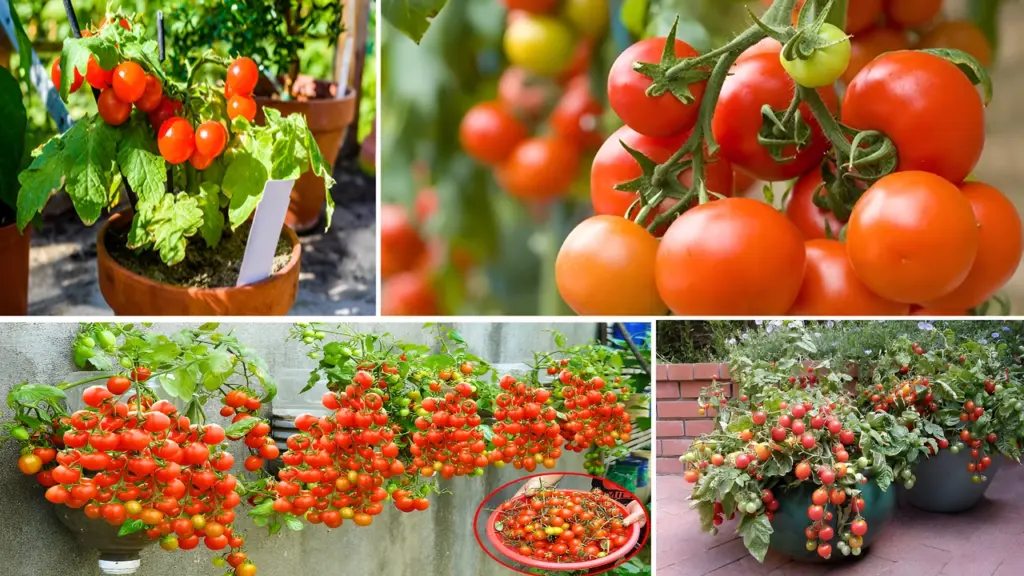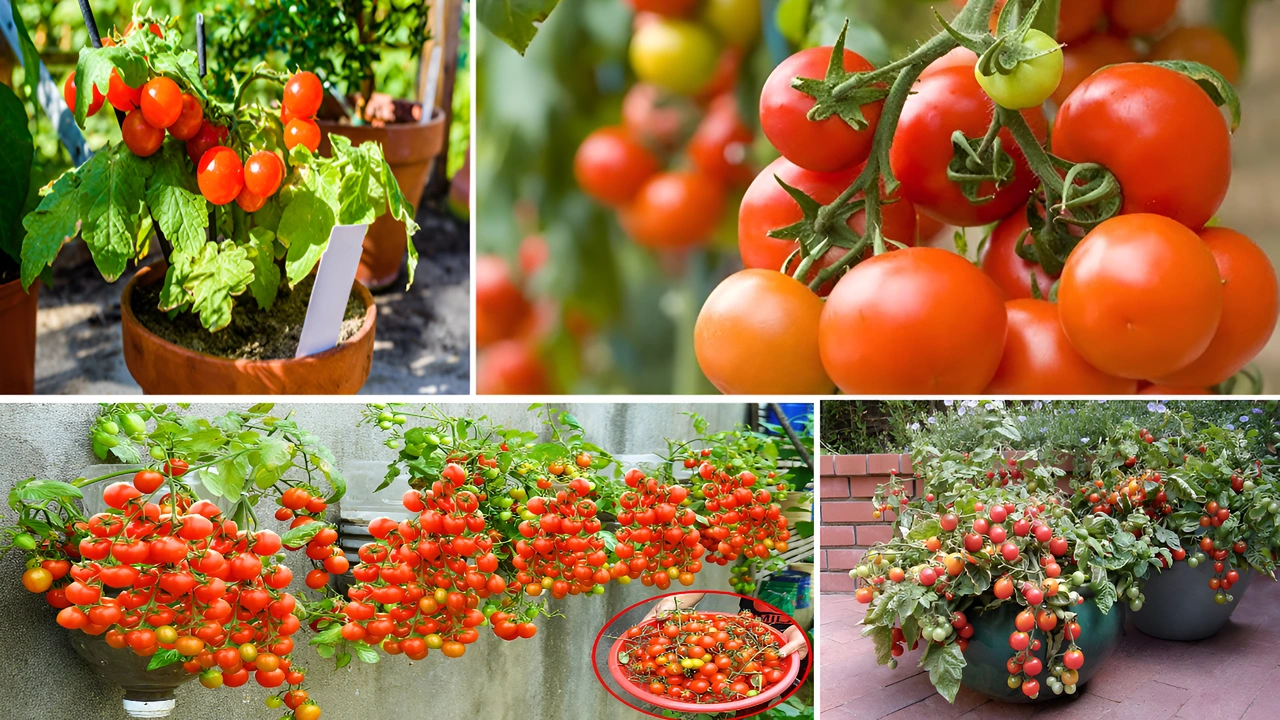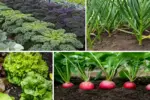Join on WhatsApp
Get the latest updates directly on WhatsApp – motivation, news & more!
Tomatoes are one of the most satisfying and versatile crops to grow at home. Whether you want juicy slices for burgers, sweet cherry tomatoes for snacking, or a bounty for sauces and canning, growing your own tomatoes can bring a big payoff. But to get healthy, flavorful fruit, it’s essential to understand what tomatoes need—and how to provide it throughout the growing season.
This guide will walk you through the full process of growing tomatoes in your backyard, from choosing the right variety to troubleshooting common issues. With the right care, even a beginner gardener can harvest vine-ripened tomatoes right outside their door.

Why Tomatoes Are a Backyard Garden Favorite
Tomatoes are one of the most popular home garden plants—and for good reason. They’re relatively fast-growing, incredibly productive, and can be tailored to suit any garden space.
Some top reasons to grow tomatoes at home include:
- Fresh flavor that’s unmatched by store-bought options
- Wide variety of shapes, colors, and tastes to choose from
- Versatility in the kitchen—great raw, cooked, or preserved
- High yields from even a few plants
- Ideal for container gardening if space is limited
Choosing the Right Tomato Variety for Your Garden
The first step is picking the right type of tomato for your needs and space. There are two main growth habits to know:
- Determinate (bush) tomatoes grow to a fixed height and produce most of their fruit at once. These are great for small gardens and containers.
- Indeterminate (vining) tomatoes grow continuously and produce fruit throughout the season. They’ll need staking or caging for support.
Popular tomato types include:
- Cherry tomatoes – Small, sweet, and great for snacking.
- Roma (plum) tomatoes – Meaty with few seeds, ideal for sauces.
- Beefsteak tomatoes – Large, juicy, and great for slicing.
- Heirloom varieties – Known for unique colors and rich flavors.
When and Where to Plant Tomatoes
Tomatoes are warm-season crops and should only be planted after the danger of frost has passed and the soil has warmed up.
Best time to plant: Late spring or early summer
Sunlight: 6–8 hours of direct sunlight per day
Soil: Loamy, well-draining soil rich in organic matter
pH range: Between 6.0 and 6.8 is ideal
If your soil is heavy clay or very sandy, work in compost or aged manure to improve texture and fertility.
How to Plant Tomatoes in Your Backyard
Tomatoes can be started from seeds indoors or purchased as young transplants from a nursery. Either way, follow these steps when planting them in the garden:
- Harden off seedlings by gradually exposing them to outdoor conditions over 7–10 days.
- Dig deep holes or trenches. Tomatoes benefit from being planted deeply—bury two-thirds of the stem to encourage strong root development.
- Space plants about 18–24 inches apart to allow for air circulation and future growth.
- Add support at planting time. Install cages, stakes, or trellises early to avoid disturbing the roots later.
- Water deeply after planting to help roots settle in.
Caring for Tomato Plants Through the Season
Tomatoes thrive with consistent care and attention. Here’s how to keep them healthy and productive:
Watering
Tomatoes need deep, regular watering—especially during flowering and fruit development. Aim to water at the base of the plant to avoid wetting the leaves, which can lead to disease. Drip irrigation or soaker hoses work well.
Feeding
Tomatoes are heavy feeders. Start with nutrient-rich soil, then side-dress with compost or apply a balanced fertilizer every few weeks. Avoid overusing nitrogen, which can cause lush leaves but few fruits.
Mulching
Add a 2–3 inch layer of mulch around the base of your plants. This helps retain soil moisture, prevent weeds, and reduce temperature fluctuations.
Pruning
For indeterminate varieties, prune suckers (the small shoots between the main stem and branches) to direct energy into fruit production. Determinate varieties usually don’t need pruning.
Staking or Caging
As plants grow, support them to prevent branches from breaking under the weight of fruit. Tomato cages are simple, while staking and tying require more upkeep but can save space.
Pollination and Fruit Set
Tomatoes are self-pollinating, but gentle shaking of flowers or attracting pollinators like bees can improve fruit set. In humid conditions, poor pollination may occur—hand-pollinating with a soft brush can help.
Common Tomato Pests and Diseases
Tomatoes are prone to several issues, especially in humid or rainy conditions. Watch for these common problems:
Pests
- Tomato hornworms – Large green caterpillars that can defoliate plants quickly. Hand-pick and remove.
- Aphids – Small sap-sucking bugs; control with neem oil or insecticidal soap.
- Whiteflies – Often found on the undersides of leaves; sticky traps can help manage them.
Diseases
- Blight (early or late) – Causes dark spots and leaf yellowing. Remove infected leaves and avoid overhead watering.
- Fusarium wilt – Soil-borne fungus that causes wilting; rotate crops and use resistant varieties.
- Blossom end rot – Caused by calcium deficiency and inconsistent watering; keep soil moisture steady and add calcium if needed.
Harvesting Your Tomatoes
Tomatoes are typically ready to harvest 60–85 days after transplanting, depending on the variety. Pick fruits when they are fully colored and slightly firm to the touch.
Don’t leave ripe tomatoes on the vine too long, as they may split or attract pests. For the best flavor, allow them to ripen on the vine when possible.
Tips for a Bigger and Better Harvest
- Use crop rotation – Avoid planting tomatoes in the same spot each year to reduce disease buildup.
- Companion planting – Grow tomatoes near basil, marigolds, onions, or garlic to deter pests.
- Succession planting – Stagger your planting every few weeks for a longer harvest season.
- Watch the weather – Shade plants during extreme heat to reduce stress and prevent blossom drop.
Final Thoughts
Growing tomatoes in your backyard is a rewarding experience that delivers fresh, delicious produce straight from the vine. With the right variety, proper soil, and a little care, you can enjoy a summer filled with homegrown tomatoes—perfect for slicing, saucing, or simply enjoying sun-warmed off the plant.
Whether you’re a first-time gardener or looking to improve last year’s crop, following these tips will help ensure your tomato plants thrive all season long.




